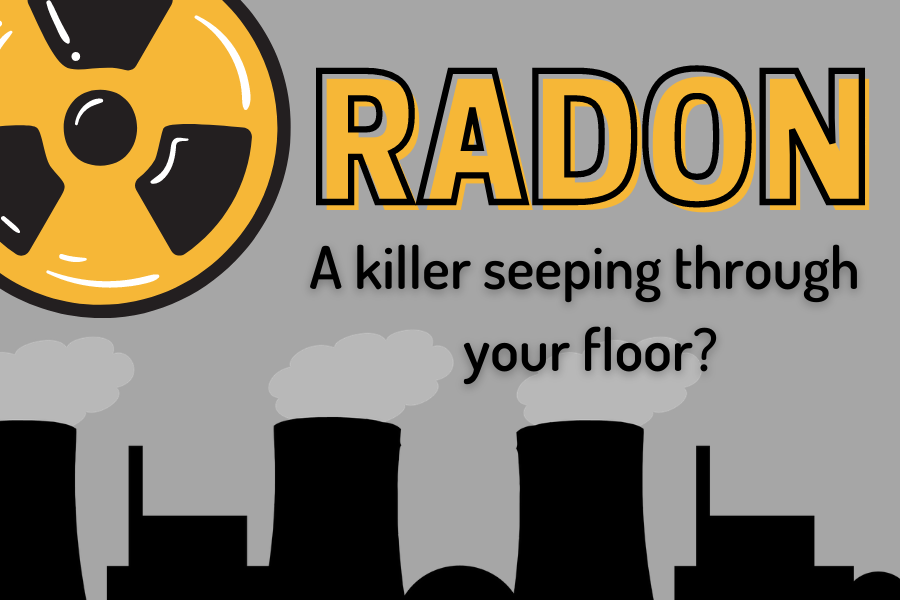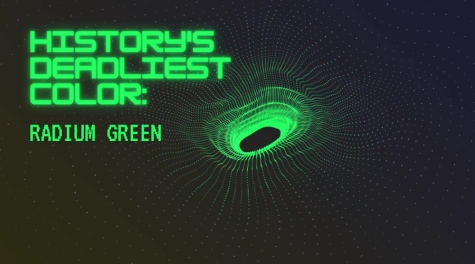Radon: A Killer Seeping Through Your Floor?
Radon: A Killer Seeping Through Your Floor?
Radon is a noble gas, but it is hardly noble by the most common definition of the word. Radon gas induces lung cancer, causing about 16,000 deaths annually in the United States. This means radon-induced lung cancer is more lethal than even melanoma. Radon gas typically seeps through the ground and irradiates one out of every fifteen homes to levels that are considered unsafe. Recently, in Scarsdale and neighboring cities, the aggressiveness by which Con Edison (and other electric companies) have moved to tackle the radon gas problem has been well chronicled. The motivation and urgency to ensure that lower radon gas levels exist in their customers’ homes are apparent.
But What is Radon?
Radon was first discovered by Friedrich Ernst Dorn in 1900. The first instance of radon-related health concerns was for uranium miners. Lung cancer rates in these miners were noticeably high. Therefore, restrictions were placed on radon presence at the digging sites.
In the mid-1980s, radon was first considered a threat to homeowners. Elevated radon levels in residential homes were discovered when Stanley Watras, a nuclear power plant worker, arrived for his daily shift. At the exits of the facility, radiation detectors were installed to ensure that no radioactive material could leave the nuclear plant. On this particular morning, as Stanley made his way inside, he surprisingly triggered the detectors. Watras’ clothing had radioactive particles from the radon in his home, sparking an investigation. Scientists determined that Mr. Watras’s house was 675 times more irradiated than what is considered safe and more radioactive than a typical uranium mine.
The exposure of Stanley’s home to radon gas was via a natural process. Uranium-238, the isotope of uranium that has an atomic mass of 238 AMU, is a naturally occurring element in the Earth. It decays, referred to as disintegration, over the course of billions of years, changing into many different elements. The sixth element in uranium-238’s decay chain is radon-222. Radon gas seeps upward throughout the soil, entering buildings through paths created by cracks and holes. Then, radon tends to remain in the room because it is 7.5 times denser than air.
The real danger of radon is inhalation. Radon itself is radioactive; however, there is more to the story. Radon has a relatively short half-life of 3.8 days. After 3.8 days, about half of a sample of radon will disintegrate to the next element in Uranium-238’s decay chain: polonium. Unlike radon, this element is solid at room temperature and will not freely move out of the lungs. The next three steps of the decay process occur rather rapidly and result in a solid carcinogen—a dangerous, cancer-causing substance.
What Is The Danger?
Similar to many lethal chemicals, a low enough amount of radon exposure can be safe. Radon presence is commonly measured in picocuries per liter (pCi/L), which represents the number of atomic disintegrations per unit time. One pCi is 2.22 atomic disintegrations per minute. The outside atmosphere contains about 0.4 pCi/L of radon. For radon to become a very dangerous issue, more than 4 pCi/L must be present. Fortunately, 14 out of 15 houses will fall under this concerning threshold.
Long-term exposure is required for most adverse health effects to appear; this means multiple years of being exposed to high levels of radon. Additionally, considerable exposure occurs almost solely in basements where access to the ground is at its greatest, so higher floors will be safer in most cases. Finally, a large majority of radon deaths will occur in people who smoke. Of the 16,000 deaths per year, only about 2,100 will be to non-smokers.
So, What Are Solutions For High Radon?
Currently, in Scarsdale and many cities across the country, homes are being tested for the presence of radon gas. If high levels of radon are discovered, generally above 2.0 pCi/L, then systems can be installed to extract radon from the air and expel it to the outside. These systems can reduce the radon level to 1.0 pCi/L or less.
Overall, radon presents a specific danger. These dangers are mainly limited to basement dwellers due to an inability of an abundance of radon to escape low areas on its own. Otherwise, one should not be fearful of the radon gas that exists elsewhere on Earth. A radon test is a good safety measure to ensure that the levels that exist in your home are not unhealthy.
Works Cited:
Cao X, MacNaughton P, Laurent JC, Allen JG. Radon-induced lung cancer deaths may be overestimated due to failure to account for confounding by exposure to diesel engine exhaust in BEIR VI miner studies. Meliker J, ed. PLOS ONE. 2017;12(9):e0184298. doi:10.1371/journal.pone.0184298
Home Buyer’s and Seller’s Guide to Radon Indoor Air Quality (IAQ). https://www.epa.gov/sites/production/files/2015-05/documents/hmbuygud.pdf
Linda B. Rosenthal – Assembly District 67 |Assembly Member Directory | New York State Assembly. (2014). Retrieved May 26, 2021, from Nyassembly.gov website: https://nyassembly.gov/mem/Linda-B-Rosenthal/story/58231
Nuclear Forensic Search Project. Berkeley.edu. Published 2021. Accessed May 26, 2021. https://metadata.berkeley.edu/nuclear-forensics/Decay%20Chains.html
Radon History – Radiological Health. Virginia.gov. Published 2021. Accessed May 26, 2021. https://www.vdh.virginia.gov/radiological-health/indoor-radon-program/history/#:~:text=Radon%20was%20discovered%20by%20Friedrich,known%20as%20radon%20since%201923.&text=Eventually%2C%20occupational%20limits%20were%20established%20for%20radon%20concentrations%20in%20uranium%20mines.
Skin cancer. Aad.org. Published 2021. Accessed May 26, 2021. https://www.aad.org/media/stats-skin-cancer
The Discovery of Radon in Homes: The Story of Stanley Watras – Elliott & Associates – Radon Mitigation. Elliott & Associates – Radon Mitigation. Published November 5, 2019. Accessed May 26, 2021. https://www.radonillinois.com/the-discovery-of-radon-in-homes-the-story-of-stanley-watras/
US EPA,OAR. Health Risk of Radon | US EPA. US EPA. Published August 14, 2014. Accessed May 26, 2021. https://www.epa.gov/radon/health-risk-radon








Eve Mitchell • Jan 3, 2022 at 11:04 am
I had no idea that a low amount of radon can be safe. My mother wants to get her home tested for radon since it’s been a long time, and she’s pretty paranoid about things like that. I think it’ll be good to test just for her sanity, but I don’t think it will be bad enough to treat. https://www.bigmtn.net/radon-mitigation